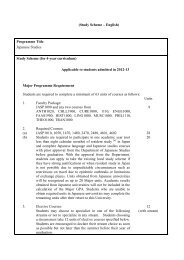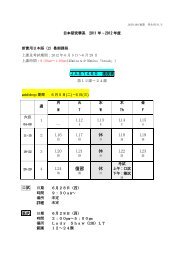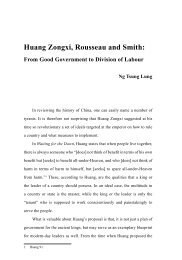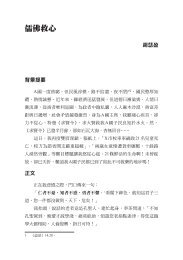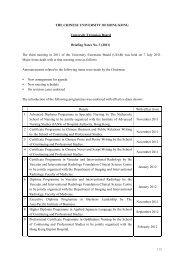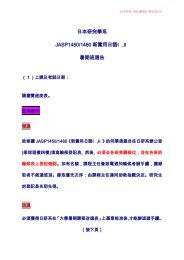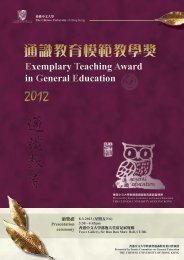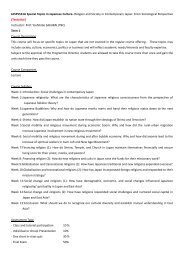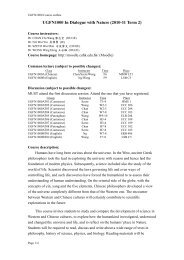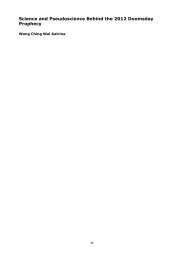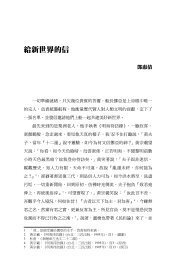ä¸è¼å ¨æ¸ - The Chinese University of Hong Kong
ä¸è¼å ¨æ¸ - The Chinese University of Hong Kong
ä¸è¼å ¨æ¸ - The Chinese University of Hong Kong
You also want an ePaper? Increase the reach of your titles
YUMPU automatically turns print PDFs into web optimized ePapers that Google loves.
Stephen J. Friedman, Outcomes, Learning, and Assessment in General Education 13Bloom’s Taxonomy, then our teaching methods (and assessments) must besynchronous with them. In this case, classroom activities must be designedaround opportunities for students to write outcomes. In the past, I have usedthe chapters in our own text as fodder for outcome development. 13 Since mystudents were from a range <strong>of</strong> disciplines, I was also able to structure somegroup work around writing outcomes. For example, the three or four historymajors were provided with a text used for a United States history coursetaught in secondary school. <strong>The</strong>ir task was to write four or five outcomes forone <strong>of</strong> the chapters. However it is executed in the classroom, an outcome at thelevel <strong>of</strong> synthesis demands that teachers provide concomitant opportunitiesfor students to practice that level <strong>of</strong> thinking.<strong>The</strong> most important concept here is that <strong>of</strong> matching learning experiencesto the intended outcome. This is especially important for outcomes beyondthe knowledge level. Somehow, if students are expected, for example, tolearn how to apply a concept, then they must be able to practice doing so.Currently, these approaches fall under the aegis <strong>of</strong> “active learning” (Bonwell& Eison, 1991), which is based on the concept <strong>of</strong> discovery learning (Bruner,1961). <strong>The</strong> idea is to plan activities where learners interact directly withthe content. One example that is a variation on the traditional, large-classdiscussion (itself an active learning strategy) is to pair students, giving thema minute or so to think about the lesson that might have just ended. Next, theyshare their thoughts with their partners and then finally reconvene with all <strong>of</strong>their peers for a formal discussion, during which time the instructor clarifies13 After students write outcomes, they might also be required to develop test items that areincorporated into an end-<strong>of</strong>-unit or other summative assessment, thereby accomplishinganother outcome for the course.



